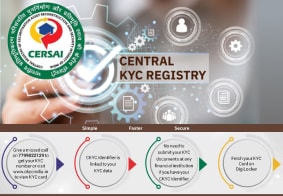CKYC Registry
-
Customer Service Contact us Service request Locate a branch
Find all the help you need
Scan the QR, get our app, and find help on your fingertips

Help CenterSupport topics, Contact us, FAQs and more
-
Login
Are you ready for an upgrade?
Login to the new experience with best features and services
-
Login
Are you ready for an upgrade?
Login to the new experience with best features and services
- Accounts
-
Deposits
IDFC FIRST Bank Deposits
View all Deposits -
Loans
IDFC FIRST Bank Loans
View all Loans - Wealth & Insure
-
Payments
IDFC FIRST Bank Payments
View all Payments -
Cards
IDFC FIRST Bank Cards
View all Cards - Blogs
- Corporate Account
-
Cash Management Services
IDFC FIRST Bank Cash Management Services
View all Cash Management Services - Supply Chain Finance
-
Corporate Lending
IDFC FIRST Bank Lending
View all -
Treasury
IDFC FIRST Bank Treasury
See more details - NBFC Financing
Support topics, Contact us, FAQs and more
- IDFC FIRST Bank Accounts
-
Savings Account
-
Corporate Salary
Account -
Senior Citizens
Savings Account -
First Power
Account -
Current Account
-
NRI Savings
Account -
TASC Institutional
Account -
Savings Account
Interest Calculator
- IDFC FIRST Bank Deposits
-
Fixed Deposit
-
Recurring Deposit
-
NRI Fixed Deposit
-
Safe Deposit Locker
-
FD Calculator
-
RD Calculator
- IDFC FIRST Bank Loans
-
Personal Loan
-
Consumer Durable
Loan -
Home Loan
-
Business Loan
-
Professional Loan
-
Education Loan
-
New Car Loan
-
Pre-owned Car Loan
-
Two Wheeler Loan
-
Pre-owned Two
Wheeler Loan -
Commercial Vehicle
Loan -
Gold Loan
-
Loan Against Property
-
Loan Against Securities
-
Easy Buy EMI card
-
Personal Loan
EMI Calculator -
Education Loan
EMI Calculator -
Home Loan
EMI Calculator
- IDFC FIRST Bank Wealth & Insure
-
FIRST Select
-
FIRST Wealth
-
FIRST Private
-
Mutual Funds
-
Sovereign Gold Bond
-
Demat Account
-
Term Insurance
-
Life Insurance
-
Health Insurance
-
General Insurance
-
Bonds
-
Loan Against
Securities -
Portfolio Management
Service
- IDFC FIRST Bank Payments
-
FASTag
-
Credit Card
Bill Payments -
UPI
-
Funds Transfer
-
Forex Services
-
Pay Loan EMI
- IDFC FIRST Bank Cards
-
Ashva :
Metal Credit Card -
Mayura :
Metal Credit Card -
FIRST Millennia
Credit Card -
FIRST Classic
Credit Card -
FIRST Select
Credit Card -
FIRST Wealth
Credit Card -
FIRST WOW!
Credit Card -
Deals
-
Debit Cards
-
Co-branded Cards
-
Credit Card
EMI Calculator -
FIRST Corporate
Credit Card -
FIRST Purchase
Credit Card -
FIRST Business
Credit Card
- Premium Metal Credit Cards
-
AshvaLifestyle1% Forex₹2,999
-
MayuraLifestyleZero Forex₹5,999
-
FIRST PrivateInvite Only
- Best for travellers
-
MayuraZero ForexMetal₹5,999
-
Ashva1% ForexMetal₹2,999
-
FIRST WOW!Zero ForexTravelLifetime Free
-
FIRST SWYPTravel OffersEMI₹499
-
FIRST Select1.99% ForexLifestyleLifetime Free
-
FIRST Wealth1.5% ForexLifestyleLifetime Free
-
Club VistaraTravelLifestyle₹4,999
-
IndiGo IDFC FIRST Dual Credit CardTravelLifestyle₹4,999
- Max benefits, Free for life
-
FIRST Classic10X RewardsShoppingNever Expiring Rewards
-
FIRST Millennia10X RewardsShoppingNever Expiring Rewards
-
FIRST Select10X RewardsLifestyle1.99% Forex
-
FIRST Wealth10X RewardsLifestyle1.5% Forex
-
FIRST WOW!RewardsTravelZero Forex
-
LIC ClassicRewardsInsuranceShopping
-
LIC SelectRewardsInsuranceShopping
- Reward Multipliers
-
AshvaLifestyleMetal₹2,999
-
MayuraLifestyleZero Forex₹5,999
-
FIRST ClassicNever Expiring RewardsShoppingLifetime Free
-
FIRST MillenniaNever Expiring RewardsShoppingLifetime Free
-
FIRST SelectNever Expiring RewardsLifestyleLifetime Free
-
FIRST WealthNever Expiring RewardsLifestyleLifetime Free
- Rewards & Credit on UPI
-
FIRST Power+FuelUPI₹499
-
FIRST PowerFuelUPI₹199
-
FIRST EA₹NVirtual1% Cashback₹499
-
FIRST DigitalVirtualUPI₹199
-
IndiGo IDFC FIRST Dual Credit CardUPITravelDual cards
- Fuel and Savings
-
FIRST PowerRewardsUPI₹199
-
FIRST Power+RewardsUPI₹499
-
LIC ClassicRewardsInsuranceShopping
-
LIC SelectRewardsInsuranceShopping
- Express and Flaunt
-
AshvaMetal1% Forex₹2,999
-
MayuraMetalZero Forex₹5,999
-
FIRST SWYPEMIOfferMAX₹499
-
FIRST MillenniaRewardsShoppingLifetime Free
- FD Backed rewarding Credit Cards for all
-
FIRST EA₹NVirtualCashback₹499
-
FIRST WOW!Zero ForexTravelLifetime Free
-
CreditPro Balance TransferTransfer & SaveReduce InterestPay Smartly
- IDFC FIRST Bank NRI Forex Solutions
-
Send money to India-Wire transfer
-
Send money to India-Digitally
-
Send money abroad
-
Max Returns FD (INR)
- IDFC FIRST Bank MSME Accounts
-
Platinum Current
Account -
Gold
Current Account -
Silver Plus
Current Account -
Merchant Multiplier
Account -
Agri Multiplier
Account -
TASC Institutional
Account -
Dynamic Current
Account -
World business
Account -
First Startup
Current Account
- IDFC FIRST Bank Business Loans
-
Business Loan
-
Professional Loan
-
Loan Against Property
-
Business Loan for Women
-
Working Capital Loan
-
Construction Equipment Loan
-
Machinery Loan
-
Healthcare Equipment Loan
- IDFC FIRST Bank Business Solutions
-
Payment Solutions
-
Tax Payments
-
Doorstep Banking
-
Point of Sale (POS)
-
Escrow Accounts
-
NACH
-
Payment Gateway
-
UPI
-
Virtual Accounts
-
As per amendment in the Income Tax Rules, PAN or Aadhaar are to be mandatorily quoted for cash deposit or withdrawal aggregating to Rupees twenty lakhs or more in a FY. Please update your PAN or Aadhaar. Kindly reach out to the Bank’s contact center on 1800 10 888 or visit the nearest IDFC FIRST Bank branch for further queries.
-
-
Most Searched
Sorry!
We couldn’t find ‘’ in our website
Here is what you can do :
- Try checking the spelling and search
- Search from below suggestions instead
- Widen your search & try a more generic keyword
Suggested
Get a Credit Card
Enjoy Zero Charges on All Commonly Used Savings Account Services
Open Account Now
Savings Account
Zero surprises, total clarity: Understanding consolidated charges
Key Takeaways
Consolidated charges bundle individual bank account charges like ATM fees, SMS alerts, and cheque penalties into a single monthly deduction, making expenses less transparent.
Understanding the meaning of consolidated charges is crucial in identifying how fees like minimum balance penalties and debit card charges impact your savings.
Opting for zero-fee banking eliminates hidden charges, giving you clarity and control over your banking transactions.
The IDFC FIRST Bank Savings Account ensures transparency and convenience by offering zero-fee banking for essential services, provided you maintain the required balance.
Ananya was scrolling through her bank statement on her phone. Everything seemed normal until she spotted a line item labelled consolidated charges. Huh? Ananya furrowed her brow. What were these charges, and why were they deducted from her hard-earned savings? Unsettled by the lack of clarity, she decides to understand what exactly consolidated charges are. Let’s join her.
READ MORE
What is the meaning of consolidated charges?
Numerous bank transactions attract bank account charges – debit card annual fees, SMS alert charges, ATM withdrawal fees exceeding the free limit, and maybe even a penalty for a bounced cheque. Consolidated charges are all these individual fees bundled together into an amount deducted from your account at the end of the month.
These savings account charges can include –
Minimum balance penalty –
Debit card charges–
SMS alert charges–
ATM withdrawal charges–
Cheque bounce charges–
Account closure charges–
If your account falls below the required minimum balance.
Annual fees or usage charges for your debit card.
Fees for receiving text message notifications about transactions.
Fees for exceeding your free monthly ATM withdrawals.
Penalty incurred when a cheque you issue is dishonoured.
Fees associated with closing your bank account.
The specific consolidated charges can vary depending on your bank and account type. This lack of transparency can be frustrating, making it difficult to predict your banking costs.
Why is transparency key?
Wouldn’t you want to know exactly how your hard-earned money is spent on bank charges? This is where transparent fee structures come in. Banks that clearly outline all their charges, including consolidated charges, empower you to make informed decisions about your banking needs.
Even better? Look for banks offering zero-fee banking options! These accounts waive most or all the standard charges associated with traditional accounts. With zero-fee banking, you can enjoy peace of mind knowing exactly how much balance you have available without worrying about surprise deductions.
Exploring IDFC FIRST Bank zero-fee banking
IDFC FIRST Bank offers a compelling example of transparent banking. With zero-fee banking, the savings account eliminates hidden fees that can sneak up on you under consolidated charges. These charges may seem insignificant, but they can add up over time.
Here is a list of bank transactions that are free under the bank’s zero-fee banking initiative –
- IMPS charges (outward)
- NEFT charges (outward at branches)
- RTGS charges (outward at branches)
- ATM transaction charges at IDFC FIRST Bank ATMs
- ATM transaction charges at other bank ATMs
- Debit card issuance charges
- Debit card annual charges
- Debit card replacement/re-issuance charges
- SMS alert charges
- Chequebook re-issuance charges
- Cash deposit & withdrawal charges at branches (by number)
- Cash deposit and withdrawal charges at branches (by value)
- Third-party cash deposit and withdrawal charges at branches
- Stop payment of cheque charges
- Cheque return – deposited
- Cheque return – issued
- Demand draft/pay order issuance charges at branches
- Demand draft/pay order cancellation/revalidation charges
- Duplicate statement issuance charges
- Duplicate passbook issuance charges
- Decline charges for insufficient balance at ATM
- Doorstep banking - cheque & document pick-up - ad hoc request
- Balance certificate issuance charges
- Interest certificate issuance charges
- Account closure charges
- International ATM/POS transaction charges
- Standing instruction setup charges
- Standing instruction failure charges
- ECS return charges
- Photo attestation charges
- Signature attestation charges
- Charges for retrieval of old transactional records
- Charges for any deliverable returned by courier due to negative reasons
- Address confirmation charges
- I-Pin regeneration charges
- Debit card PIN regeneration charges
IDFC FIRST Bank allows the feature of zero-fee banking, subject to the maintenance of a minimum balance in the ₹10,000/₹25,000 Average Monthly Balance (AMB) savings account. The bank also reserves the right to charge fees under certain circumstances.
The takeaway
By understanding the meaning of consolidated charges and the benefits of transparent fee structures, you can take control of your banking expenses. IDFC FIRST Bank Savings Account is a prime example of transparent and convenient banking. So, ditch the surprises and embrace clear, zero-fee banking today!
Disclaimer
The contents of this article/infographic/picture/video are meant solely for information purposes. The contents are generic in nature and for informational purposes only. It is not a substitute for specific advice in your own circumstances. The information is subject to updation, completion, revision, verification and amendment and the same may change materially. The information is not intended for distribution or use by any person in any jurisdiction where such distribution or use would be contrary to law or regulation or would subject IDFC FIRST Bank or its affiliates to any licensing or registration requirements. IDFC FIRST Bank shall not be responsible for any direct/indirect loss or liability incurred by the reader for taking any financial decisions based on the contents and information mentioned. Please consult your financial advisor before making any financial decision.
The features, benefits and offers mentioned in the article are applicable as on the day of publication of this blog and is subject to change without notice. The contents herein are also subject to other product specific terms and conditions and any third party terms and conditions, as applicable. Please refer our website www.idfcfirstbank.com for latest updates.























